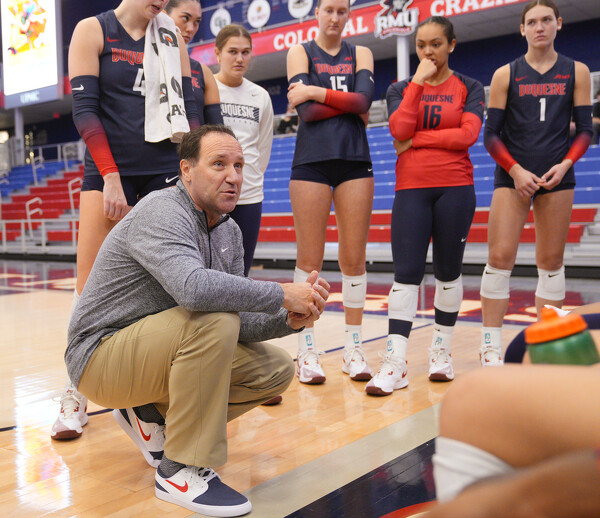
A visitor takes a photo of vegetation in the Prairie Creek treatment train wetland during a wetlands tour in July 2025.
CELINA - So far this year, area treatment trains that clean the water flowing into Grand Lake have performed extremely well and microcystin toxin levels have generally remained below long-term averages, according to Stephen Jacquemin, an environmental sciences professor at Wright State University-Lake Campus.
"Overall, this year's been a great success from a water treatment perspective," Jacquemin said Sept. 6 at the Lake Improvement Association's monthly meeting.
And there are still several weeks of pumping in store.
Treatment trains that filter out nutrients responsible for toxic blue-green algal blooms in Grand Lake are moving tremendous amounts of water, Jacquemin revealed.
The vegetative biofilters - primarily composed of wetlands - have been established at Coldwater, Prairie, Beaver and Big Chickasaw creeks. Nutrient runoff comes from many sources, but in the Grand Lake Watershed, studies show it's mostly from farmland in the 58,000-acre, livestock-heavy watershed.
The Prairie Creek treatment train, which has been plagued by pumping problems and other issues in recent years, operated at about a quarter of capacity in 2024, but has been brought up to full speed in 2025.
"We've seen Prairie Creek has been fully operational all year long - and it's the first time in several years that we've had the high pump rates over there," Jacquemin said. "Coldwater Creek was back this year. Remember the last couple of years that we've had some issues with pumps out there as well."
The wetlands are still seeing heavy action, at least for the time being.
"Our wetlands are still operational for the year. They're still doing extremely well," he said. "We're getting to that point in time in the fall when the pumping rates might start to slow down. I'm sure they will, between now and the next time we chat next month."
Right now on a daily basis, the Prairie Creek treatment train is moving over a million gallons, Beaver Creek about half a million gallons, Big Chickasaw Creek roughly three-quarters of a million gallons and Coldwater Creek somewhere between 3 1/2 and 5 million gallons.
"These are great numbers for this time of year, and we've been operating on these numbers for about the last month, month and a half, so we're kind of at peak efficiency," Jacquemin said. "But one of the things that we're starting to notice … (is) that our dissolved nutrients, the reduction efficiency is starting to drop off."
Most importantly, lake officials are seeing total phosphorous reductions from the settling of particulates and sediment reduction, Jacquemin noted, adding that the wetlands will continue to operate at current pump rates for another few weeks.
"And then we'll cut the pump rates in half, and that will buy us a little bit more time for the season to move a little bit more water, treat a little bit more of the inflows to Grand Lake," he said.
Officials had hopes of processing 1 billion gallons of water in 2025, compared to about 625 million gallons last year.
"We've had a solid year across the board. I'm excited to get into the final data analysis once the pumps go off, sort of see how things shake out for this year," he said. "2025 has been a great year. it's set us up pretty nicely for next year."
It's also been a good year insofar as microcystin toxin levels. Microcystin is a toxin produced by cyanobacteria, more commonly called blue-green algae, that can sicken people and animals.
"We are sitting just below the long-term average … for this week in time," he said. "That long-term average comes to us from over a decade worth of weekly water samples. This is from basically the middle of the lake over by the Celina water treatment plant intake."
Samples have shown that the microcystin levels this year have consistently remained below the long-term average.
"We have had about three or four weeks this year, so far, where we've sort of touched that long-term average line, but we really haven't gone above it very much," Jacquemin said. "We went above it once, just for a little bit, and then it came right back down, so overall this has been a really, really good year."
A couple of new projects on the horizon should continue to assist in ameliorating lake water quality, such as the Red Wing Nature Preserve, construction of which just got underway recently.
The Red Wing property was purchased with a $388,796 Clean Ohio Green Space Conservation Program grant last summer and spans 16.5-acres on State Route 703. It was previously owned by Gold Circle Developers of St. Marys. The rest of the expense was covered by H2Ohio funds and a donation from Gold Circle Developers.
Lake Facilities Authority approved a bid of $255,571.60 from VTF Excavation LLC of Celina for the construction of wetlands and the installation of a pump station at the property in April.
ODNR previously approved a request to redirect the remaining $385,000 in H2Ohio grant funds from the Mercer Wildlife Area project to the Red Wing Nature Preserve.
"This will be a site that will have some walking trails. Folks will be able to go and explore that, but it'll be another pump system," Jacquemin said. "We'll pump lake water into it, treat that lake water. There's also an adjacent creek that runs through that property that drains a little bit into the north shore."
Once completed, it will represent the second or third wetland on the north side of Grand Lake, he added.
"This is a big deal," Jacquemin insisted. "We've got a number of wetlands on the south side. Obviously that's where the majority of the water comes in, so that's important, but it's also important to have a few here and there on the north side."


